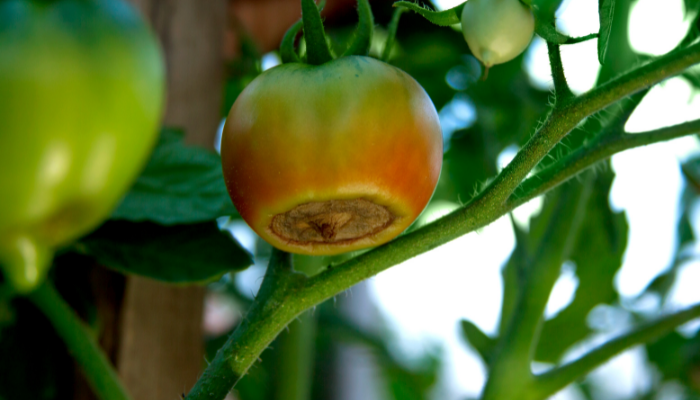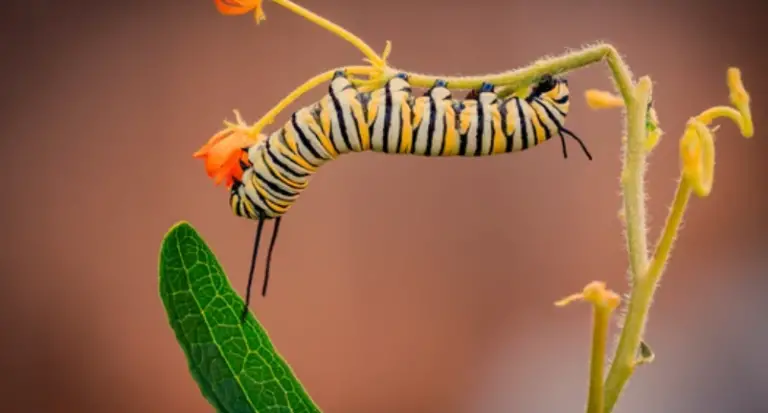Why Are My Grapes Turning Brown: Causes and Solutions
Grapes are a delicious and nutritious fruit that many people enjoy eating. However, one problem that grape growers and enthusiasts may face is the browning of grapes. This can be frustrating and confusing, especially if you’re not sure what’s causing it.
There are several reasons why grapes may turn brown, including environmental factors, pest and disease management, and improper vine care. Understanding the causes of grape browning can help you prevent it from happening in the future and ensure that you have a healthy and thriving grape vine. In this article, we will explore the various reasons why grapes may turn brown and what you can do to prevent it.
Key Takeaways
- Grapes may turn brown due to environmental factors, pest and disease management, and improper vine care.
- Understanding the causes of grape browning can help prevent it from happening in the future.
- Proper grape vine care and preventive measures can help ensure a healthy and thriving grape vine.
Grape Brown Rot
Causes of Grape Brown Rot
Grape brown rot is a fungal disease that affects grapevines. The fungus responsible for brown rot is called Guignardia bidwellii. The disease can be caused by a number of factors, including:
- High humidity and moisture levels
- Poor air circulation around the grape clusters
- Inadequate sunlight exposure
- Insect damage to the grapes
- Damage to the grape skin during harvest
Symptoms of Grape Brown Rot
The symptoms of grape brown rot include:
- Brown discoloration on the grape skin
- Shrinking and drying of the grape clusters
- A sour or musty smell emanating from the grapes
- A white or grayish powdery substance on the grape clusters
If left untreated, grape brown rot can spread rapidly and cause significant damage to the grape crop. It is important to identify the symptoms of the disease early and take appropriate measures to prevent its spread.
In order to prevent grape brown rot, it is important to maintain good vineyard management practices, such as:
- Regular pruning and thinning of grape clusters to improve air circulation
- Proper irrigation and drainage to prevent waterlogged soil
- Regular inspection of grape clusters for signs of insect damage or disease
- Prompt removal and disposal of infected grapes and plant debris
Additionally, fungicides can be used to prevent the spread of grape brown rot. Fungicides should be applied according to a regular schedule, starting at bud break and continuing through the growing season until the grapes change color.
Environmental Factors Affecting Grape Health
Grapes are a sensitive fruit that requires specific environmental conditions to thrive. Several factors can affect the health of grapevines, including weather, soil, and water conditions. Understanding how these factors impact grapevines can help growers take the necessary steps to prevent grapes from turning brown.
Impact of Weather Conditions
Weather conditions play a significant role in the health of grapevines. Extreme temperatures, high winds, and excessive rainfall can all impact grape health. For example, high temperatures can cause sunburn on grapes, which can lead to browning. On the other hand, excessive rainfall can cause grapes to absorb too much water, leading to splitting and browning.
Role of Soil Conditions
Soil conditions also play a crucial role in grape health. Poor soil quality can lead to nutrient deficiencies, which can impact grape growth and ripening. Over-fertilization can also cause grape leaves to turn brown. Over-fertilization can lead to a buildup of salt in the soil, which can damage the roots and cause the leaves to turn brown. Using the correct amount of fertilizer recommended for the grape plant can help prevent this issue.
In addition to soil quality, soil moisture is also essential for grape health. Grapes require well-draining soil to prevent waterlogging, which can lead to root rot and browning. Proper irrigation techniques can help ensure that grapes receive the right amount of water without becoming waterlogged.

Pest and Disease Management
Common Grape Pests
Grapes are susceptible to a variety of pests, including black vine weevils, Japanese beetles, and spider mites. Black vine weevils can cause a loss of vigor and poor fruit growth, while Japanese beetles can cause leaves to turn brown and not ripen. Spider mites can cause yellowing of leaves and a reduction in fruit quality.
To prevent these pests from damaging grapevines, it’s important to regularly inspect the plants for signs of infestation. Handpicking pests, such as Japanese beetles, and dropping them into a bucket of soapy water can be an effective method of control. Additionally, introducing natural predators, such as ladybugs, can help keep pests in check.
Effective Disease Control Methods
Grapes are also susceptible to a variety of diseases, including black rot and grape anthracnose. Black rot is the most widespread disease of grapes and can cause grapes to turn brown and shrivel. Grape anthracnose can cause leaf spots and fruit rot.
To prevent these diseases from damaging grapevines, it’s important to practice good sanitation and canopy management. Removing all infected woody tissue during regular pruning can help reduce inoculum. An early application of lime sulfur to the vines before bud swell has been shown to reduce the initial spread of grape anthracnose. Fungicide sprays can also be effective in preventing the spread of diseases, but it’s important to adhere to a regular spray schedule beginning at bud-break and continuing every 7-10 days through the growing season and until the grapes change color.
By regularly inspecting grapevines for signs of pests and diseases, and implementing effective control methods, growers can ensure healthy grape crops and high-quality fruit.
Proper Grape Vine Care
Proper grape vine care is essential for healthy grapevines that produce high-quality fruit. Here are some important practices to follow:
Pruning Techniques
Pruning is an essential practice in grape vine care. It helps to remove dead or diseased wood, promote air circulation, and encourage new growth. Grape vines should be pruned in late winter or early spring before the buds start to grow.
The University of California Statewide Integrated Pest Management Program recommends a four-arm Kniffin system for pruning grapevines. This system involves training the grapevine to grow four arms on a trellis system. The arms are then pruned to two buds each year. This system allows for good light penetration and air circulation, which helps to reduce disease pressure.
Watering and Fertilizing Requirements
Grapevines require well-drained soil and regular watering. However, overwatering can lead to root rot and other diseases. It is best to water grapevines deeply once a week during the growing season.
Fertilization is also an important aspect of grape vine care. Grapevines require nitrogen, phosphorus, and potassium for healthy growth. A soil test can help determine the nutrient needs of the grapevines. It is best to fertilize grapevines in the spring before the buds start to grow.
It is important to note that excessive nitrogen can lead to excessive vegetative growth and reduced fruit quality. It is best to follow the recommended fertilization rates for grapevines based on the soil test results.
In summary, proper grape vine care involves pruning techniques and watering and fertilizing requirements. Following these practices can help ensure healthy grapevines that produce high-quality fruit.
Preventive Measures and Solutions

Cultural Controls
Cultural controls are an effective way to prevent grape black rot. Here are some recommended cultural controls:
- Pruning: Prune out and remove all infected canes, shoots, and leaves. This will help reduce the amount of inoculum in the vineyard.
- Sanitation: Remove and destroy mummified fruit and infected plant material. This will help reduce the amount of inoculum in the vineyard.
- Spacing: Increase the spacing between vines to promote air circulation and sunlight penetration. This will help reduce the humidity and moisture levels in the vineyard, which can reduce the risk of infection.
- Fertilization: Avoid excessive nitrogen fertilization, which can promote vegetative growth and increase the susceptibility of the plant to black rot.
Chemical Controls
Chemical controls are also an effective way to prevent grape black rot. Here are some recommended chemical controls:
- Fungicides: Apply fungicides at regular intervals to protect the plant from infection. Fungicides should be applied at bud break and continued at 7-10 day intervals until veraison. Consult with a local extension agent or a licensed pesticide applicator for specific recommendations on fungicide selection and application.
- Sulfur: Sulfur can be used to control black rot and other fungal diseases. Sulfur should be applied at 10-14 day intervals from bloom until veraison. Sulfur can also help control powdery mildew.
- Copper: Copper can be used to control black rot and other fungal diseases. Copper should be applied at 10-14 day intervals from bloom until veraison. Copper can also help control downy mildew.
It is important to note that chemical controls should be used in conjunction with cultural controls for optimal disease management.
Frequently Asked Questions
What causes black rot on grapes?
Black rot is a fungal disease that affects grapevines. It is caused by an airborne fungus called Guignardia bidwellii. The fungus infects the grapevine through the leaves, shoots, and fruit. The disease is most common in warm, humid weather conditions.
How to treat black spots on grapes?
Black rot cannot be cured once the grapes are infected. However, it can be prevented by adhering to a fungicide spray schedule. Fungicides should be applied beginning at bud-break and continuing every 7-10 days through the growing season and until the grapes change color. Cultural practices such as removing infected fruit and leaves and disposing of them in the trash can also help control the disease.
Why do grapes turn brown in the freezer?
Grapes can turn brown in the freezer due to freezer burn. Freezer burn occurs when the moisture in the grapes evaporates, leaving them dehydrated and discolored. To prevent freezer burn, grapes should be stored in an airtight container or freezer bag.
What is the homemade fungicide for black rot?
A homemade fungicide for black rot can be made by mixing one tablespoon of baking soda, one tablespoon of vegetable oil, and one gallon of water. The mixture should be sprayed on the grapevines every 7-10 days during the growing season.
Why are my grapes turning brown in the fridge?
Grapes can turn brown in the fridge due to moisture loss. To prevent this, grapes should be stored in an airtight container or plastic bag with a damp paper towel. The damp paper towel will help maintain the moisture in the grapes.
Why are my green grapes turning brown on the vine?
Green grapes can turn brown on the vine due to sunscald. Sunscald occurs when the grapes are exposed to too much direct sunlight. To prevent sunscald, grapes should be pruned to allow for adequate leaf cover and shading.









